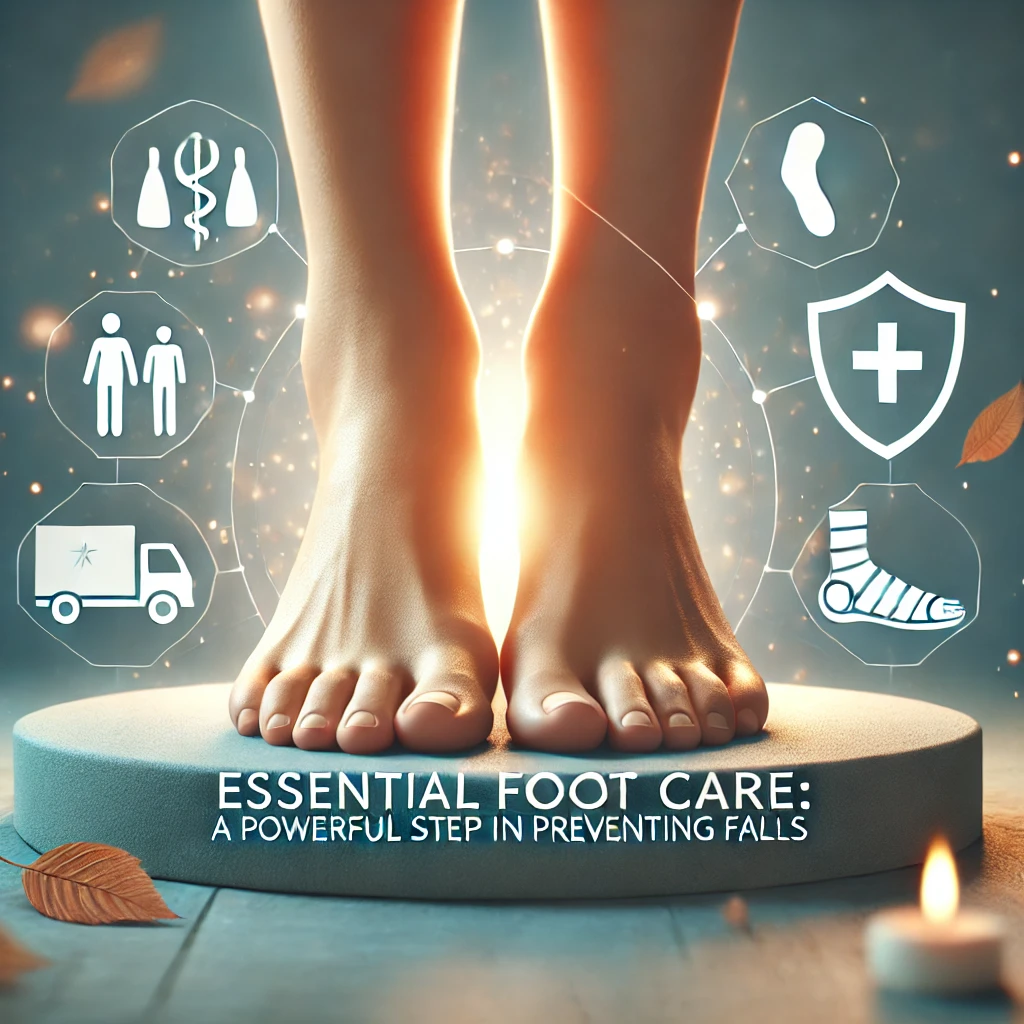Introduction
Foot cramps can strike at the most inconvenient times—whether you’re sleeping soundly or exercising vigorously. These sudden, involuntary contractions of the muscles can be extremely uncomfortable and, at times, even debilitating. But what causes these painful spasms, and how can you keep them at bay?
In this article, we’ll explore everything you need to know about foot cramps, from their common causes to the best prevention methods. Whether you’re an athlete, someone with a sedentary lifestyle, or just someone who occasionally experiences cramps, this guide will equip you with the tools you need to avoid them. Let’s dive in!
Common Causes of Foot Cramps

Understanding what triggers foot cramps is the first step in preventing them. Here are some common culprits:
1. Dehydration
Dehydration is a leading cause of muscle cramps. When your body lacks enough water, it disrupts the balance of electrolytes like sodium and potassium, which are crucial for muscle function. This imbalance often leads to spasms.
2. Overuse of Muscles
Overworking your foot muscles, especially during exercise or prolonged standing, can lead to fatigue and cramping. This is particularly common among runners and people with physically demanding jobs.
3. Nutritional Deficiencies
A lack of essential nutrients such as magnesium, calcium, and potassium can contribute to muscle cramps. These minerals play a significant role in muscle contraction and relaxation.
4. Poor Circulation
Restricted blood flow to the feet, often caused by sitting for long periods or wearing tight shoes, can lead to cramping. Poor circulation reduces oxygen and nutrient delivery to your muscles.
5. Underlying Medical Conditions
Conditions such as diabetes, peripheral neuropathy, and thyroid disorders can make individuals more prone to cramps. Certain medications, like diuretics, may also have cramps as a side effect.
Understanding Risk Factors
Foot cramps don’t happen randomly; several factors can increase your risk.
Age and Lifestyle
As you age, muscle elasticity decreases, making cramps more frequent. Sedentary lifestyles can also weaken muscles, increasing susceptibility.
Physical Activity Levels
High-intensity workouts without adequate stretching or hydration can put you at greater risk. Conversely, lack of exercise can lead to muscle atrophy, another cause of cramps.
Medical Conditions and Medications
Individuals with chronic health conditions or those taking medications like statins or diuretics may experience frequent cramping as a side effect.
How to Prevent Foot Cramps

Prevention is always better than cure. Here are some practical strategies to keep foot cramps at bay:
Staying Hydrated
Drinking enough water throughout the day ensures that your muscles stay hydrated and balanced. Aim for 8-10 glasses of water daily, and increase intake during physical activity or hot weather.
Stretching and Exercising Regularly
Simple stretches and exercises can strengthen your foot muscles and improve flexibility. Toe stretches, ankle rotations, and calf raises are great options.
Maintaining Balanced Nutrition
Ensure your diet includes plenty of magnesium, potassium, and calcium. Bananas, leafy greens, nuts, and dairy products are excellent sources.
Choosing Proper Footwear
Wear comfortable, well-fitted shoes that provide adequate arch support. Avoid high heels or shoes with poor cushioning for prolonged periods.
Improving Circulation
Elevate your legs occasionally and avoid sitting or standing in one position for too long. Compression socks can also promote better blood flow.
Effective Home Remedies
For those occasional cramps, these remedies can provide quick relief:
Stretching Before Bed
A quick stretch of your toes and calves before bedtime can reduce the likelihood of nocturnal cramps.
Warm Compresses
Applying a warm compress to the cramping area helps relax the muscles and improve blood flow.
Epsom Salt Soaks
Soaking your feet in a warm Epsom salt bath provides magnesium to your muscles, easing tension.
Massage Therapy
Massaging the affected area can relieve pain and encourage relaxation.
Lifestyle Changes to Prevent Foot Cramps
Making small, intentional changes to your daily routine can significantly reduce your chances of experiencing foot cramps. Here’s how:
Regular Physical Activity
Consistent exercise keeps your muscles strong and flexible. Low-impact activities like yoga, swimming, and walking are particularly beneficial for improving muscle tone and circulation.
Managing Stress
Stress can lead to muscle tension and spasms. Incorporate relaxation techniques like meditation, deep breathing, or progressive muscle relaxation into your day.
Establishing a Sleep Routine
Poor sleep quality can exacerbate cramps. Aim for 7-9 hours of restful sleep each night, and ensure your sleeping position doesn’t restrict blood flow to your legs or feet.
When to Seek Medical Attention
Sometimes, foot cramps are a sign of an underlying health issue. Knowing when to seek professional advice is essential.
Identifying Chronic Foot Cramps
If cramps occur frequently and are severe, it might indicate a persistent problem. Chronic cramps can interfere with daily life and sleep quality.
Symptoms That May Indicate a Serious Issue
Look out for symptoms such as swelling, redness, or persistent pain. These could signal a blood clot, nerve issue, or other medical condition.
Professional Diagnosis and Treatment
A healthcare provider can perform tests to determine the root cause of your cramps and recommend treatment options, such as physical therapy or medication.
Exercises to Alleviate and Prevent Foot Cramps
Incorporating targeted exercises into your routine can strengthen your feet and prevent cramps.
Toe Stretching

Sit down and extend your legs. Pull your toes back toward your body using your hands or a resistance band. Hold for 20-30 seconds.
Ankle Rotations
While seated, lift your feet off the ground and rotate your ankles clockwise and counterclockwise. Repeat 10 times on each side.
Calf Raises
Stand with your feet shoulder-width apart and slowly rise onto your toes, then lower back down. Do 2-3 sets of 10-15 repetitions.
Foot Rolling Techniques

Use a tennis ball or foam roller under your foot to massage the arch. Roll gently for 2-3 minutes per foot.
Myths About Foot Cramps
Separating fact from fiction can help you adopt effective prevention strategies.
Misconceptions About Water Intake
While hydration is essential, simply drinking more water isn’t a cure-all. Electrolyte balance is equally crucial.
The Role of Salt in Cramps
Salt intake often gets blamed for cramps, but the reality is more complex. A deficiency or imbalance in sodium can cause cramps, but excessive salt isn’t the solution either.
Can Foot Cramps Always Be Prevented?
Unfortunately, no. While prevention methods reduce the risk, some factors like genetics or chronic health conditions may still cause occasional cramps.
Preventing Foot Cramps in Specific Situations
Certain situations make foot cramps more likely. Here’s how to manage them:
During Exercise
Warm up and stretch before and after physical activities. Stay hydrated, and consider electrolyte supplements for intense workouts.
While Sleeping
Keep your feet warm with socks or a blanket. Elevate your feet slightly with a pillow to improve circulation.
For Pregnant Women
Pregnancy-related cramps are common due to hormonal changes and increased pressure on the legs. Gentle stretches, hydration, and magnesium-rich foods can help.
Dietary Tips to Prevent Foot Cramps
Your diet plays a significant role in muscle health. Here’s what to focus on:
Foods Rich in Electrolytes
Include bananas, oranges, avocados, and spinach in your meals. These are rich in potassium and magnesium, which help maintain muscle function.
Hydration and Healthy Beverages
Avoid sugary and caffeinated drinks. Instead, drink water, coconut water, or sports drinks with electrolytes.
Supplements and Their Role
If dietary adjustments aren’t enough, consider supplements like magnesium, calcium, or potassium under the guidance of a healthcare professional.
The Role of Stress Management
Managing stress effectively can minimize the risk of cramps caused by muscle tension.
How Stress Triggers Muscle Cramps
Stress can lead to overactivation of your nervous system, causing involuntary muscle contractions.
Relaxation Techniques
Practice deep breathing exercises, progressive muscle relaxation, or listen to calming music to reduce stress.
Meditation and Its Benefits
Regular meditation improves overall well-being and lowers stress, helping to relax your muscles and reduce cramp frequency.
The Science Behind Foot Cramps
Understanding the science behind cramps can demystify the condition.
How Muscles Contract and Relax
Muscles contract when nerve signals stimulate them. For proper relaxation, a balance of electrolytes is essential.
The Role of Nerve Signals
Misfired nerve signals, often due to fatigue or dehydration, can trigger sudden muscle spasms.
Why Cramps Can Be So Painful
The pain occurs because the muscle stays in a contracted state, restricting blood flow and increasing tension in surrounding tissues.
Tips for Quick Relief from Foot Cramps
When cramps strike, these tips can provide immediate relief:
Immediate Stretching Techniques
Extend your leg and gently pull your toes toward your body. This stretches the cramped muscle, alleviating tension.
Cooling or Heating Methods
Apply an ice pack to numb the area or a heating pad to relax tight muscles.
Using Over-the-Counter Solutions
Topical creams with menthol or capsaicin can provide temporary relief from pain and cramping.
FAQs About Foot Cramps
Can Foot Cramps Be Genetic?
Yes, genetic factors can increase susceptibility to cramps, especially if there’s a family history of muscle disorders.
Are Foot Cramps More Common at Night?
Yes, nocturnal leg cramps are common due to reduced blood flow and muscle relaxation during sleep.
What Are the Best Supplements for Foot Cramps?
Magnesium, potassium, and calcium supplements are often recommended, but consult a doctor before starting any.
Can Yoga Help Prevent Foot Cramps?
Absolutely! Yoga improves flexibility, strengthens muscles, and enhances circulation, reducing cramp frequency.
Is It Normal for Children to Have Foot Cramps?
Yes, growing pains or dehydration can cause cramps in children. Ensure they stay active and hydrated.
Conclusion
Foot cramps can be frustrating, but with the right prevention strategies and remedies, you can significantly reduce their occurrence. Stay hydrated, eat a balanced diet, and make small lifestyle adjustments to keep your feet cramp-free. If you experience chronic or severe cramps, consult a healthcare professional to address underlying issues.











If somee onne wants expert view concerniing blogging then i rrecommend him/her tto visjt this weblog, Keeep uup thhe goood work.